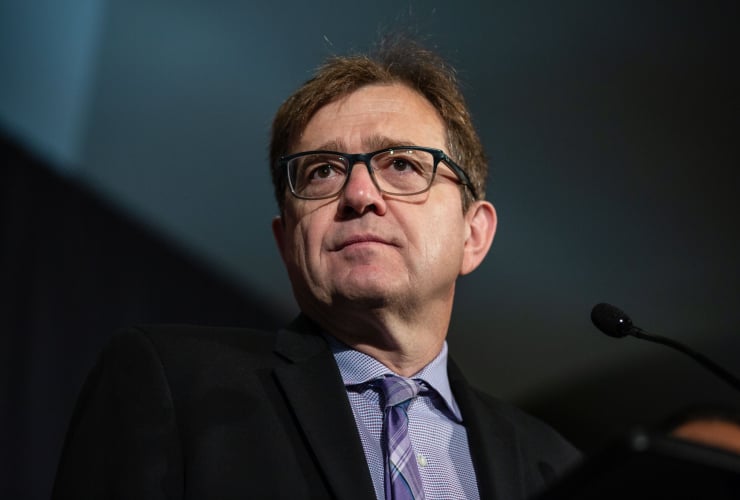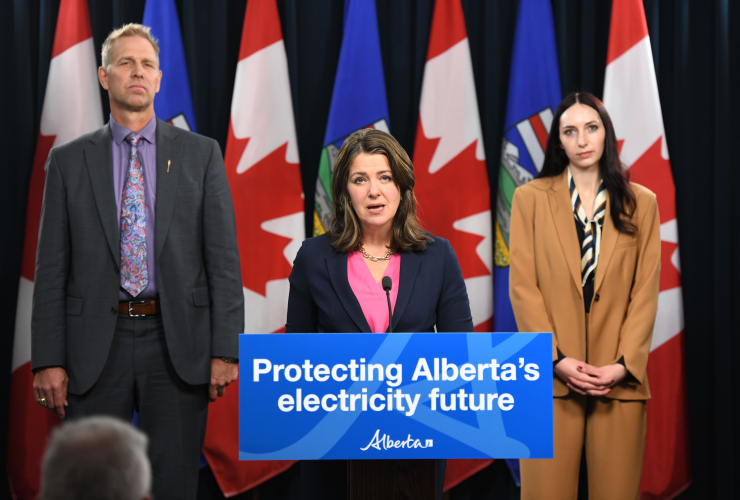Federal Energy and Natural Resources Minister Jonathon Wilkinson reaffirmed his government’s support for the nuclear industry with a $50-million investment to expand nuclear power generation in Ontario.
The federal funding will help Bruce Power, the private entity that manages and operates one of the largest nuclear power plants in the world, do preparatory work to add a third power station to its existing facility. The power station sits on the shores of Lake Huron, around 227 kilometres northwest of Toronto.
“Today's announcement is yet another endorsement of Canada's nuclear industry, which will continue to be an important part of our efforts to maintain and strengthen Canada's clean electricity advantage,” said Wilkinson on Thursday before a crowd of 200 at the Canadian Nuclear Association’s annual conference in Ottawa.
“This investment speaks to what's possible when we put aside partisan differences and work together towards common goals and finding real solutions that address climate change and create economic opportunity,” Wilkinson added.
Ontario Energy Minister Todd Smith and Bruce Power CEO and president Michael Rencheck commended Wilkinson for his government’s investment at the announcement Thursday morning.
This is the first time in decades Ottawa has opened its purse for a large investment to expand a large nuclear facility. The project is referred to as Bruce C and is still in the impact assessment stage.
At the announcement, Smith joked that the province only had to wait 239 days for federal funding for the Bruce Power plant and that since he “mentioned the Pickering refurbishment as well, we'll see if we can act even quicker on that one.”
The nuclear industry is not without its critics, however. Outside the conference, demonstrators railed against the nuclear safety commission for greenlighting Canadian Nuclear Laboratories’ licence to construct a radioactive waste disposal site near Deep River, Ont.

Wilkinson didn’t comment on the Canadian Nuclear Safety Commission’s decision beyond pointing out that it’s hard to get unanimous support for projects and the people unhappy with the decision are currently exercising their options by pursuing two judicial reviews.
Critics of nuclear energy highlight the pervasive problem of the long-lived radioactive waste it creates. Many environmental and climate organizations also say the high cost of building large plants and developing small modular reactor technology raises questions about the business case and could divert funding from renewable technologies and energy storage projects. There is also the lengthy timeline, and many groups worry some of the technological developments will come too late to help slash planet-warming greenhouse gas emissions by the end of the decade.
It remains unclear what kind of nuclear reactor the Bruce C project will be. Options include a Candu reactor, the same model as other reactors at the Bruce Power station, the emerging small modular reactors (SMRs), or some other type. Bruce C could add up to 4,800 megawatts of power to the plant’s existing capacity, which would essentially double its output. Bruce Power’s two existing facilities provide energy for 30 per cent of Ontario’s current electricity needs, according to Bruce Power. The $50 million will come from a $250-million Natural Resources Canada funding program that supports preparatory work for large clean electricity projects.
“This project alone represents more than 25 per cent of the new nuclear capacity required for Ontario to meet its clean energy needs in 2050,” said Wilkinson. He added, “It will help Canada with its ongoing efforts to achieve a clean, reliable and affordable electricity grid.”
More nuclear generation and small modular reactors are a centrepiece of Ontario’s decarbonization pathways report. Ontario needs to add up to 18 gigawatts of new nuclear power, Smith said at the announcement.
A few months ago, the federal government launched a ministerial working group tasked with improving regulatory efficiency for clean growth projects. Wilkinson said this group will “have more to say of this vital work later this spring.”
“We continue to engage with stakeholders across the nuclear space and with the CNSC to learn new ways we can make it easier for project proponents to navigate the unique Canadian Nuclear Regulatory system,” said Wilkinson.
Along with the $50 million for Bruce C, Wilkinson pointed to other federal investments in nuclear, including up to $74 million to advance the deployment of small modular reactors in Saskatchewan announced this summer. Dustin Duncan, Saskatchewan’s minister of Crown corporations, told Canada’s National Observer that a decision on SMRs will likely not happen until around 2029.
The federal clean electricity investment tax credit — with an estimated value of $25.7 billion — also applies to new nuclear projects, Wilkinson told attendees. This includes projects like the refurbishment of Ontario Power Generation’s Darlington nuclear generating station about 45 kilometres east of Toronto. And earlier this week, the federal government announced its green bonds program will now include some nuclear projects.
At last year’s Canadian Nuclear Association conference, Wilkinson announced a program to enable SMR development that provides nearly $30 million over four years.
Natasha Bulowski / Local Journalism Initiative / Canada’s National Observer
Well, while this sucks
Well, while this sucks because nuclear power is a terrible idea for many reasons, its ridiculous cost not the least among them, 50 million isn't going to buy a lot of nuke plants. So it probably doesn't matter that much. If they put in 50 BILLION, maybe they'd eventually get, oh, three working nuclear power plants out of it . . . although if they're going to be SMRs, maybe not.
50 million almost feels like their heart isn't in it. Like they're doing the minimum it takes for their donors who push nuclear to get off their backs.
Very glad to see this support
Very glad to see this support for nuclear plant development to go forward. Electrification needs lots of reliable base power and nuclear is part of that.







Comments